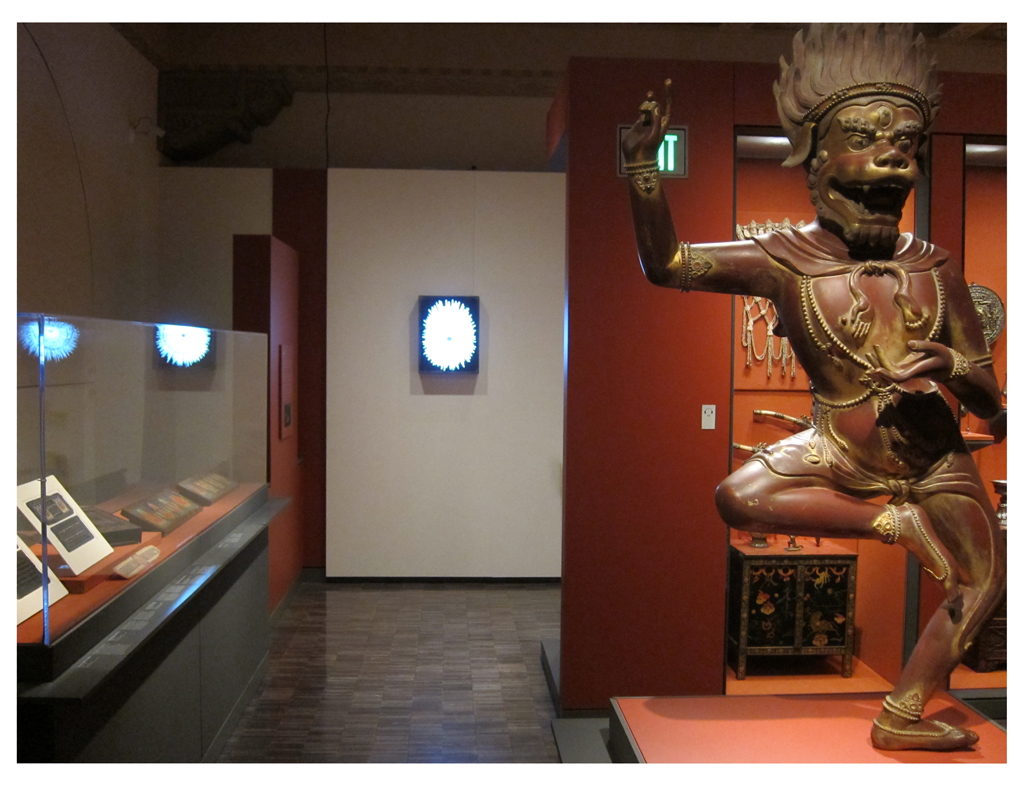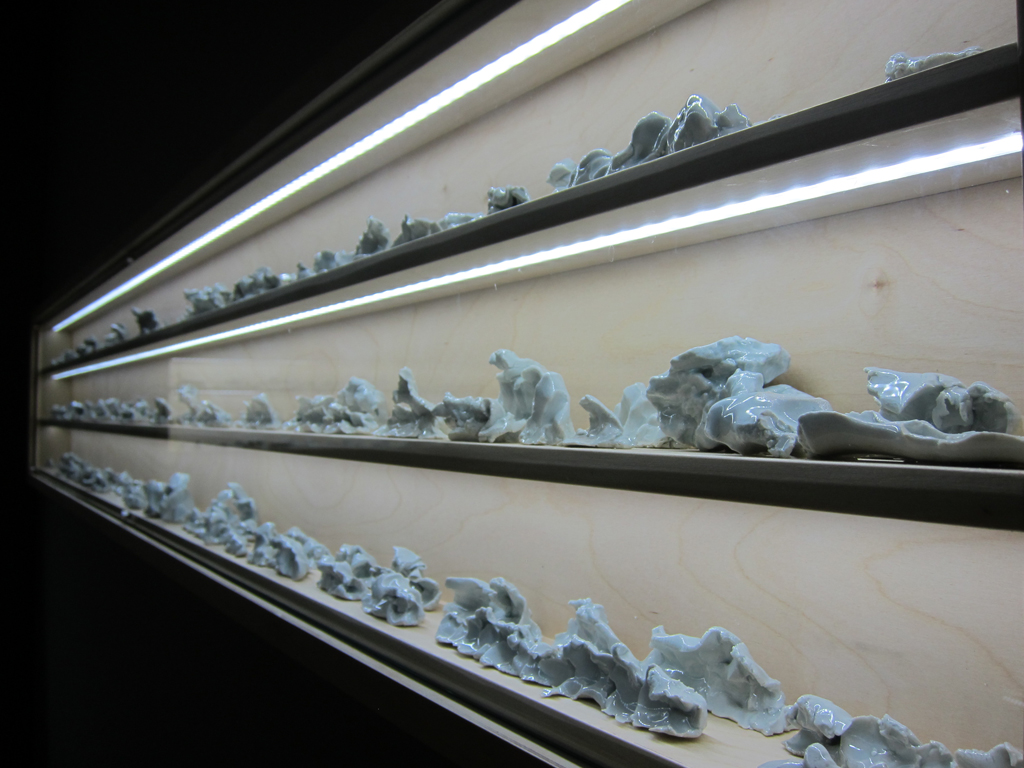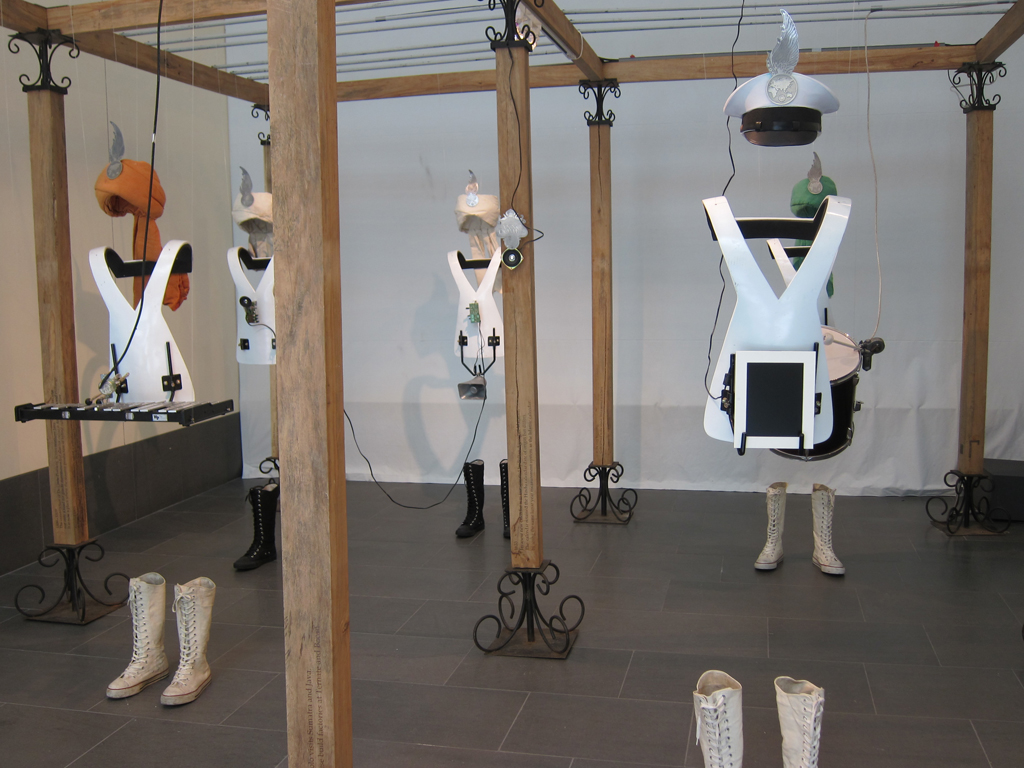Phantoms in the museum? Sounds kind of scary. diaCRITIC Lien Truong introduces and reviews the current exhibit of contemporary Asian art at the Asian Art Museum in San Francisco. Turns out that the exhibit, Phantoms of Asia, Contemporary Awakens the Past, actually isn’t frightening at all but rather inspiring. Try and catch it before its close in September 2012.
Currently on view at the Asian Art Museum is an innovative new exhibition, Phantoms of Asia, Contemporary Awakens the Past. Rather than curate this show in a separate space, curators here have integrated artworks from living Asian artists alongside the historical and traditional spiritual works in the museum’s collection. The feat of installing contemporary works to traditional pieces which are loaded with history and meaning tests the significance and presence of both old and new as they are showcased alongside one another.
The themes manifested in the exhibition include spirits, spirituality, cosmic order and the afterlife. It’s not surprising given the vast number of the museum’s Buddhas, Krishnas, scrolls and screens from their permanent collection. A fair amount of the contemporary works laced throughout the museum’s collection were placed thoughtfully, bearing in mind the architecture as well as the content of works they were neighbored with.
I found the pieces drawing me in with their beautiful forms and imaginative use of mediums; then, becoming conscience of its surroundings, I pondered their relevance to neighboring works. Oddly, both old and new works obsessively utilize patterns that could be found in nature, the cosmos, or atomic structures. The repeated forms and re-contextualized compositions also give the sense of the Eastern and tie these Asian artists together. Many of these contemporary works are unquestionably influenced by their predecessors. As these artists work to address the unyielding observations that afflict every generation—life, death, religious beliefs, morality, etc.—, the question of how each has resolved the question of relevance and significance of his/her time is fascinating. In some instances, such as in Palden Weinreb’s Astral Invert, cosmic interconnections is reduced to the universality of light.
Raqib Shaw’s mixed media paintings (such as Absence of God VII above) fantastically embrace historical hybrid animals, vibrant nature and animated drama, all in incredibly impressive, crafted Eastern-style stacked narratives. Shaw’s “bling” isn’t formed out of precious metal but more accessible and therefore mundane everyday materials of glitter, enamel paint and rhinestones. Perhaps a ploy to reach us “commoners,” it was effective. Somehow, maybe by memory of knowing and having touched these media, having created with them whether in kindergarten or another age, his characters seemed somehow “reachable” and allegorical without the barrier of preciousness.
Included in the exhibition are video and installations that have been allotted their own separate space on the first floor, so as to not distract from other works. Above, Anno Domini‘s complicated installation of “soldiers,” architecture, sound and technology poignantly captures the complexity of Indonesia’s hybrid cultural identity. The costumes combine Hindu, Western, Islamic and local dress, and reflect on Dutch Colonialism. As the piece lapses, the bodiless soldiers keep up their guard as their instruments move to the rhythm of hybrid sounds.
31 living Asian artists participate in this exhibition. While that is not a small number, the vastness of the museum and the way the pieces are dispersed alongside its more permanent residents create a show that seems intimate and select. My recommendation is: allow yourself some time to observe the works and reflect on how these reflections of artistic expression span the past and present.
Lastly, do not miss Hiroshi Sugimoto’s Five Elements in the Lee Gallery. Somehow I managed to be with his piece alone (almost), and I hope you’ll be as lucky. I walked in knowing it was his work and nothing else, and if it weren’t for the museum guard I was trying to ignore who was effectively making sure visitors don’t damage or take photos of Sugimoto’s work, I think it would have brought me to tears.
Phantoms of Asia is on view at the Asian Art Museum through September 2, 2012. For more information go to visit the exhibit website.
Lien Truong lives and works in Northern California, where she teaches painting and drawing at Humboldt State University. Her artwork has been exhibited in numerous venues, including The National Portrait Gallery, Galerie Quynh Contemporary Art and Southern Exposure. More info here.
–
Do you enjoy reading diaCRITICS? Then please consider subscribing!
Please take the time to rate this post (above) and share it (below). Ratings for top posts are listed on the sidebar. Sharing (on email, Facebook, etc.) helps spread the word about diaCRITICS. And join the conversation and leave a comment! What’s your Asian art museum experience? Who are your favorite Asian, Asian American artists? What are your favorite pieces?








